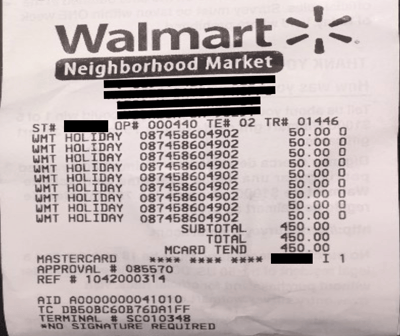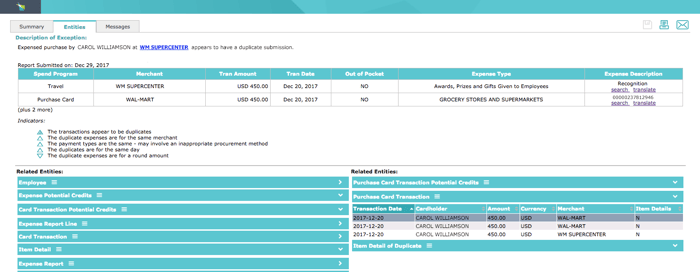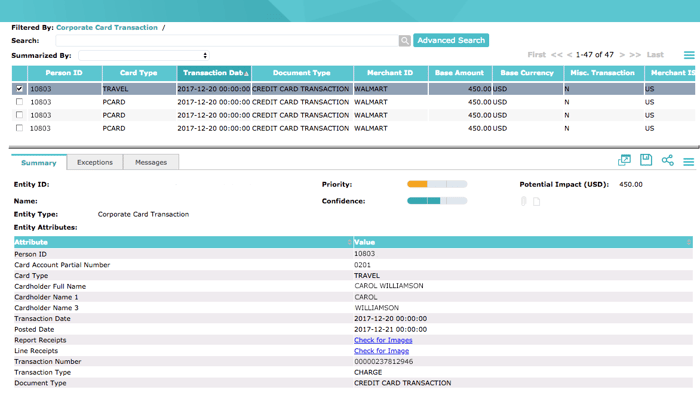The Gift that Keeps on Giving: 12 Ways to Tighten Gift Card Policies




Gift cards can offer a convenient raffle prize for team outings. We see them handed out for a job well done, on special occasions, and birthdays. Unfortunately, a minority of employees can exploit gift cards to “reward” themselves at the expense of their employers.
For example, five days before Christmas, an employee at a Fortune 200 manufacturing firm we’ll call Carol found herself at Walmart with all the other last-minute shoppers. Her boss had asked her for a small favor: To pick up some $75 gift cards for the team’s holiday lunch the following day.
On December 29, Carol expensed the $450 in gift cards bought with the corporate travel card. Her boss promptly signed off on her expense report. No problems here.
 Receipts are, at best, a weak financial control that can blind you to the fraud or misuse in front of you.
Receipts are, at best, a weak financial control that can blind you to the fraud or misuse in front of you. However, what Carol did next would have surprised even her closest co-workers: She submitted another expense report with three valid sales receipts, each for $450 in gift cards that she had bought the same day with the company purchase card (P-Card). A different department manager signed off on these P-Card purchases. He was none the wiser, even with the itemized receipts attached to her report, and therein lies the problem. The two managers only saw the individual expense reports submitted to them for approval, not the bigger picture, and they were approved without a second thought.
The travel expense management (TEM) system never flagged any of these purchases as suspicious. A TEM system will only find errors, duplicates, or low-level policy violations on a single expense report – not fraud or misuse occurring across time and involving multiple purchases, expense categories, payment types, and so on.

Carol’s holiday gift card fraud scheme would have stayed hidden forever were it not for the fact that her company had implemented Oversight’s Insights On Demand®, an artificial intelligence-based automated risk management and compliance monitoring solution.
When a shared services analyst we’ll call Richard came back from the holidays in January, Carol’s gift card purchases were flagged in Oversight as high-risk transactions. Using the Oversight workbench to review further detail, Richard figured out that $1,350 of the $1,800 in gift cards was fraudulent.

Rethinking gift card policies
In recent years, many companies have been rethinking their gift card policies after uncovering fraudulent transactions like Carol’s that had slipped past their expense management systems.
For example, one of our clients set up hard rules around gift card usage, requiring a signed affidavit outlining what the gift cards were being used for and who was going to receive each gift card. As a result, the number of gift card purchases has dropped significantly, because employees know the company is looking more carefully at these purchases.
Another Fortune 50 firm banned gift cards for employee recognition. However, they allow spot bonuses based on a set dollar amount, that can be made on their corporate card. These purchases are then designated as “spot bonus” as the expense type and can be monitored and tracked.
Based on our work with hundreds of Fortune 2000 companies, we’ve compiled 12 ways to strengthen your financial controls on gift cards.
12 Tips for Strengthening Financial Controls
Replace soft rules with hard rules
Choose better alternatives
Monitor closely for fraud and misuse
Oversight is the leader in AI-powered spend monitoring and control. Our platform helps finance teams find risk, eliminate noise, automate resolution, and improve audit outcomes. From duplicate payments to policy violations and fraud, Oversight continuously analyzes 100% of transactions to surface what matters most -so your team can reduce waste, enforce compliance, and protect the bottom line with less manual effort.


